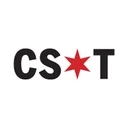7 Best-Performing Commodity ETFs for December: FGDL, USG and More
Commodity exchange-traded funds such as FGDL and USG can help hedge against inflation and global conflict. Here are the top-performing commodity ETFs.

Many, or all, of the products featured on this page are from our advertising partners who compensate us when you take certain actions on our website or click to take an action on their website. However, this does not influence our evaluations. Our opinions are our own. Here is a list of our partners and here's how we make money.
The investing information provided on this page is for educational purposes only. NerdWallet, Inc. does not offer advisory or brokerage services, nor does it recommend or advise investors to buy or sell particular stocks, securities or other investments.
Commodity ETFs are baskets of investments that focus on oil, corn, gold, soybeans and other commodities.
Commodity ETFs may help diversify your portfolio.
Highly focused commodity ETFs may carry more risk than well-diversified ETFs.
FGDL is one of the best-performing commodity ETFs in the last year. SIVR is one of the best-performing exchange-traded commodities (ETCs).
What is a commodity ETF?
A commodity ETF is an exchange-traded fund that invests in physical commodities such as agricultural products, energy sources and metals. Commodity ETFs often grow in popularity during global conflict or high inflation, as commodities are always needed by consumers. Other purchases — for example, luxury goods or discretionary items — may be put off during difficult times.
Broad commodity ETFs may include several types of commodities, such as oil, wheat, gold, silver, corn, and soybeans. A more focused commodity ETF will likely invest in just one type.
7 best-performing commodity ETFs
Below are seven of the best-performing ETFs listed on major U.S. exchanges that track commodities, ordered by one-year return.
Ticker | Company | Performance (Year) |
|---|---|---|
FGDL | Franklin Responsibly Sourced Gold ETF | 58.88% |
USG | USCF Gold Strategy Plus Income Fund | 43.90% |
HGER | Harbor Commodity All-Weather Strategy ETF | 18.58% |
PIT | VanEck Commodity Strategy ETF | 17.59% |
IGLD | FT Vest Gold Strategy Target Income ETF | 16.55% |
CERY | SPDR Bloomberg Enhanced Roll Yield Commodity Strategy No K-1 ETF | 15.38% |
SDCI | USCF SummerHaven Dynamic Commodity Strategy No K-1 Fund | 14.82% |
Source: Finviz. Data is current as of 2025-12-03 and is intended for informational purposes only. | ||
Brokerage firms | |
|---|---|
What are exchange-traded commodities (ETCs?)
Exchange-traded commodities (ETCs), which are also sometimes known as commodity exchange-traded products (ETPs), are securities that track a specific commodity, such as silver, by investing in futures contracts.
ETC returns largely reflect changes in the spot price of the underlying commodity, but other factors may cause their returns to diverge slightly from the underlying commodity. For example, the process of "rolling over" futures contracts — that is, renewing the ETC's commodity investment positions when old contracts expire — can generate unexpected profits or losses for ETCs.
Best-performing exchange-traded commodities
Below are seven of the best-performing ETCs listed on major U.S. exchanges, ranked by one-year return.
Ticker | Company | Performance (Year) |
|---|---|---|
SIVR | abrdn Physical Silver Shares ETF | 90.19% |
SLV | iShares Silver Trust | 89.72% |
PLTM | GraniteShares Platinum Shares | 72.53% |
PPLT | abrdn Physical Platinum Shares ETF | 70.82% |
GLTR | abrdn Physical Precious Metals Basket Shares ETF | 67.11% |
BAR | GraniteShares Gold Shares | 59.28% |
GLDM | SPDR Gold MiniShares Trust | 58.67% |
Source: Finviz. Data is current as of 2025-12-03 and is intended for informational purposes only. | ||
Why invest in commodity ETFs?
Commodity ETFs can help round out an investment portfolio. They offer diversification by providing exposure to additional economic sectors. That way, if one sector is performing poorly, another sector may be able to boost it.
For example, if you invest in an oil commodity ETF and a clean energy ETF, you're protecting your portfolio against economic volatility. If a foreign war is making oil more expensive, clean energy may get a boost. If the price of solar panels goes up, oil becomes more attractive to consumers. This formula doesn't always work perfectly, but it may help your investments enjoy some stability.
» Looking for more diversification? Check out the best-performing ETFs
Pros and cons of commodity ETFs
Commodity ETF pros
Commodities can help hedge against inflation.
Commodity ETFs may help diversify your portfolio, depending on what you’ve already invested in.
Commodity ETF cons
Commodities are often at the whim of geopolitical and climate events. If you invest in a wheat ETF and there's widespread drought, for instance, your ETF may not perform well.
If you invest too much in any one particular commodity, that may cancel out its diversification benefits.
How to invest in commodity ETFs
Investing in commodity ETFs is fairly easy, but you'll need to follow a few steps first if you don't already have a brokerage account.
1. Open an investment account
An investment account is simply where your investments themselves — and the money you plan to spend on them — live. Some investment accounts have significant tax benefits over others, so it's worth reading up on which type of investment account is right for you. Once you know which type of account you'd like to open, you can read our roundup of the best online brokerage accounts to find one that fits your needs.
» Check out the best brokerage accounts for ETFs
2. Research commodity ETFs
Most online brokerage accounts will have screening tools that can help you search through commodity ETFs. When comparing ETFs, make sure you look at the following metrics to help narrow down your options:
Expense ratios: Expense ratios are annual fees that are taken as a percentage of your assets. For example, if the fund charges a 1% expense ratio, and you have $10,000 invested, you'll pay $100 in fees annually. ETFs tend to have lower expense ratios than actively managed funds, and you may be able to find commodity ETFs with expense ratios around 0.20%.
Keep in mind that you'll never see expense ratios show up on monthly statements. These fees are taken out automatically, so it's important to know how much you'll lose to fees before you invest. Check out our mutual fund fee calculator to see how much a fee can cost you over time.
Volume: This shows how many shares traded hands over a given time period — it’s an indicator of how popular a particular fund is.
Holdings: Most funds will show you their top ten holdings, which means the ten companies that take up the biggest percentage of a fund.
Performance: Sure, past performance doesn’t indicate future returns, but a fund's history can be useful. Look at a fund's long-term performance, so three-year, five-year or 10-year performance instead of one-year for example, to get a sense of how it has performed historically.
NerdWallet rating 4.8 /5 | NerdWallet rating 4.5 /5 | NerdWallet rating 5.0 /5 |
Fees $0 per online equity trade | Fees $0 per trade. Other fees apply. | Fees $0 per trade for online U.S. stocks and ETFs |
Account minimum $0 | Account minimum $0 | Account minimum $0 |
Promotion None no promotion available at this time | Promotion Get up to $1,000 when you open and fund an E*TRADE brokerage account. Terms apply. | Promotion None no promotion available at this time |
3. Purchase the commodity ETF
The process for buying commodity ETFs is similar to the process for buying stocks. Navigate to the “trading” section of your brokerage’s website and search for the ETF using its name or ticker symbol and enter either how many shares you'd like to purchase or the dollar amount you'd like to purchase.
» Next steps: How to buy and invest in ETFs








